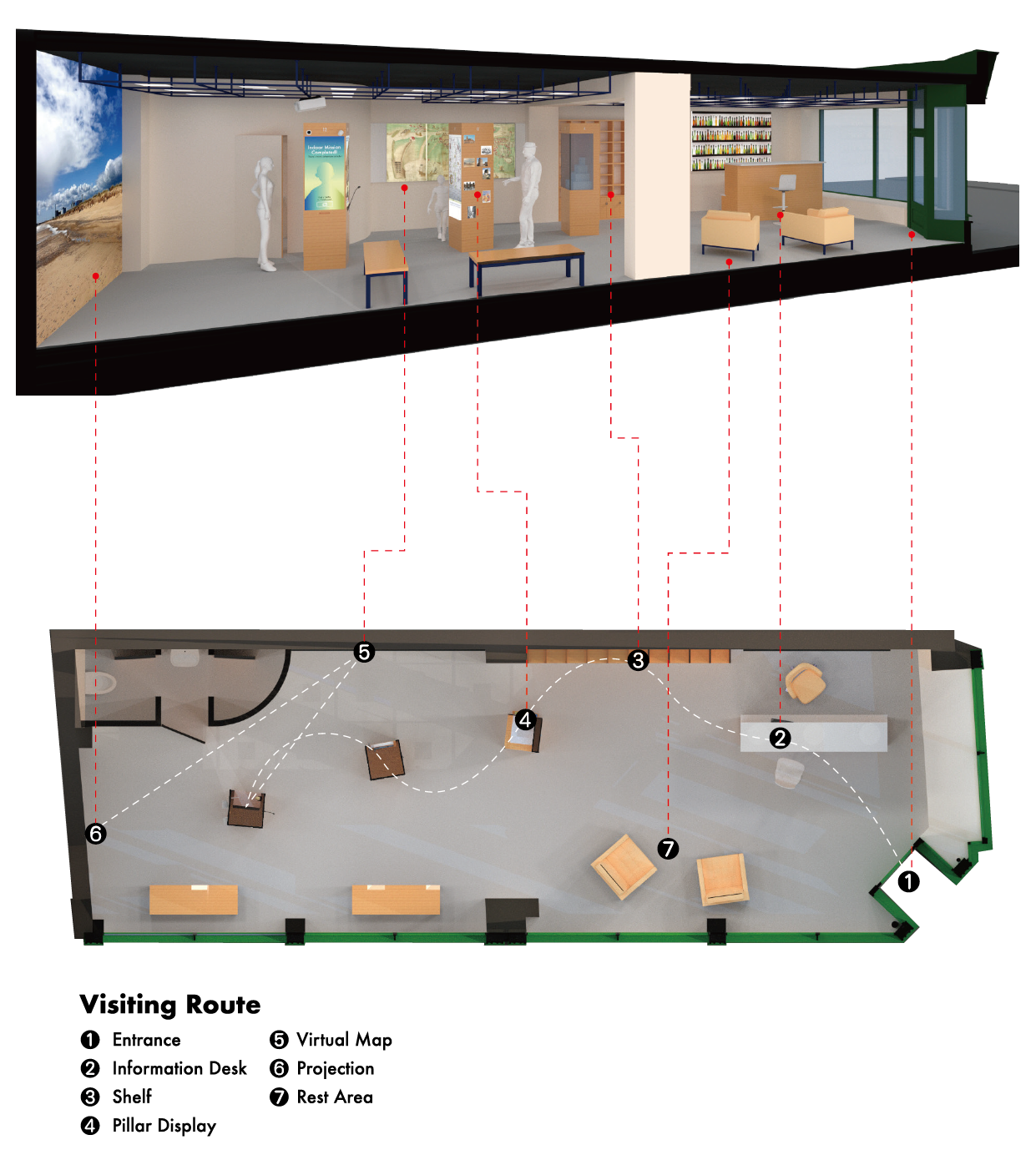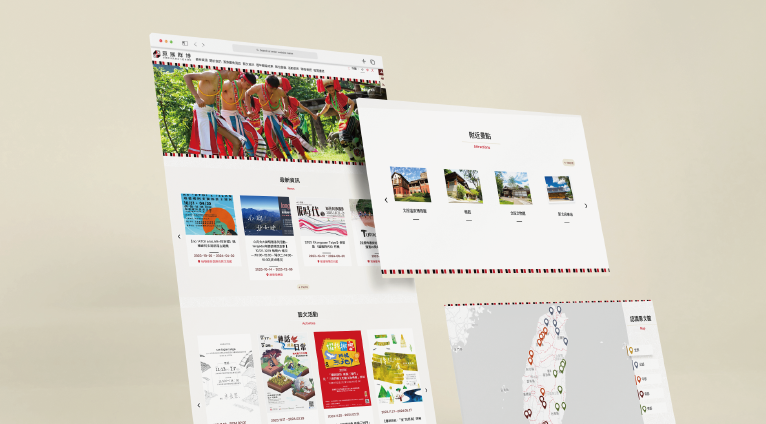Great Yarmouth Heritage Centre
The Great Yarmouth Preservation Trust (UK) acquired a building, No. 14 King Street, in Great Yarmouth town center. The trust and its partners are planning to repair and repurpose it as a Heritage Centre, showcasing Great Yarmouth’s rich history and culture.
- Develop a comprehensive design concept.
- Formulate strategies for implementing the design concept.
- Develop strategies for future developments.
- Visual Design
- Research and Synthesis
- Experience Design

About Great Yarmouth & Great Yarmouth Preservation Trust:
Great Yarmouth is a renowned coastal town in England. Positioned strategically between Britain and Europe, it holds significant historical importance in British trade.
The client for this project is the Great Yarmouth Preservation Trust, established in 1979. Dedicated to preserving, protecting, and promoting the heritage of Great Yarmouth, it stands as one of the longest-established building preservation trusts in the UK.
In the initial stages of the plan, the executive team conducted preparatory work, such as workshops and exhibition fieldwork, to gather opinions and ideas about the historical exhibition from a diverse range of age groups.
Gather information through site visits and workshops to develop an implementation plan suitable for Great Yarmouth, focusing on data integration.
This phase involves creating sketches, color matching, planning tour routes, configuring lighting, and establishing other detailed settings. The final step includes the creation of a 3D model.
The Great Yarmouth Preservation Trust was then entrusted with the final design plan for the implementation of the project content.
What do tourists want from Great Yarmouth?
The figure below shows the data from trends.google.com of queries about Great Yarmouth in Google. The seasonal trend is very clear! Summer is the by far the high season. Most tourism-related searches are related to accommodations which is not surprising. Cultural Heritage related queries are not part of the statistics.
Google queries of the term ‘Great Yarmouth’ by month since 2004.

Despite the fact that Great Yarmouth has a lot of interesting cultural resources, most tourists come to Great Yarmouth to enjoy the sea and the seaside resources. This form of tourism is greatly influenced by climate factors. It concentrates on the summertime, and its focus is limited. Heritage values are under exploited. This unbalance is a challenge for the heritage centre.
Listed historical buildings in Great Yarmouth

The Heritage Centre will showcase a wider tourism offer than currently facilitated by the town’s traditional seaside-resort reputation, encouraging locals and visitors to explore the town’s history and re-imagine the past through interactive digital technology.
The digital offer developed through this commission should align with the wider agenda for the Heritage Centre, which will be designed to:
- Serve as an arrival point for visitors to Great Yarmouth
- Showcase Great Yarmouth’s diverse heritage and culture
- Provide an alternative to traditional tourist information centres, with a focus on more engaging and immersive approaches to interpretation
- Continue to promote the town’s more prominent, traditional, attractions
- Inspire visitors to learn more about the town’s heritage and proactively explore its culture and tourism offer
- Incentivise visits to undervalued and overlooked sites by enhancing them with new, digital experiences
The primary objective is to design a concept for an immersive digital resource, which will be displayed in the Heritage Centre. It should communicate information about Great Yarmouth’s heritage and culture to visitors in an engaging manner, inspiring them to learn more by visiting sites and attractions around the town. In addition to designing a resource for visitor engagement within the Heritage Centre, options for a complementary digital product which can be accessed entirely remotely should also be explored.
Pandemic Constraints:
Many local facilities in the United Kingdom were closed due to the impact of the novel coronavirus (COVID-19), making it impossible to gather on-site tourism information. As a result, some reference materials were provided by the Great Yarmouth Preservation Trust.

Space Limitation:
The designated site for the Heritage Centre is relatively narrow (approximately 14.5X4.5m²). Therefore, in this center, three rectangular pillars will serve as the main display elements. Each side of these pillars can accommodate various forms of exhibition content. This design allows visitors to have a rich experience within the constraints of limited space.
Visiting Route
Cultural Heritage Center is themed with a simple and natural style, aiming to provide visitors with a comfortable and well-lit space. Facilities include Pillar Display, Virtual Map, Exhibition Shelf, and Projection Wall, among others. These features allow for the flexibility to change exhibition content at any time, enhancing richness. The Rest Area is equipped with lounge chairs, providing travelers with a place to take a break.

Pilliar Display
The exhibition hall contains three pillars, each of them four-sided, a large LCD screen on a wall, a projection corner and a shelf. The visiting route brings the visitors from pillar to pillar. There is a mix of real objects, LCD screens, 3D models, pictures, maps and also a phone.
Audiences are required to use smartphones to interact with displays on the pillars and engage in a series of interactive games. The purpose of these games is to enhance participants' interest and sense of identity regarding Great Yarmouth (First Pillar), provide basic information and knowledge about Great Yarmouth (Second Pillar), and invite participants to share their feedback on local attractions (Third Pillar). This feedback can serve as reference material for other tourists or the Cultural Heritage Center.
The interactive displays on the pillars include geological models, Q&A challenges, photo exhibits, voice interactions, and more. These elements offer a vivid and entertaining way for the public to easily digest information, fostering a positive connection.

Smartphone App Concept
Finally, the experience extends to a smartphone app, guiding participants to explore outdoor attractions and creating a comprehensive itinerary for their visit. Visitors are expected to stay in the centre for about 30 minutes, including 5 minutes of inquiry and rest time, and 25 minutes to visit the exhibition. The aim of the centre exhibits is to enhance what the tourists will experience in the town with some interesting and interacting content. An app allows tourists to receive help also outside, without being restricted by space.

All credits for the 3D models in this project belong to Dr. Pierre Smars, who is also a member of our core team.


